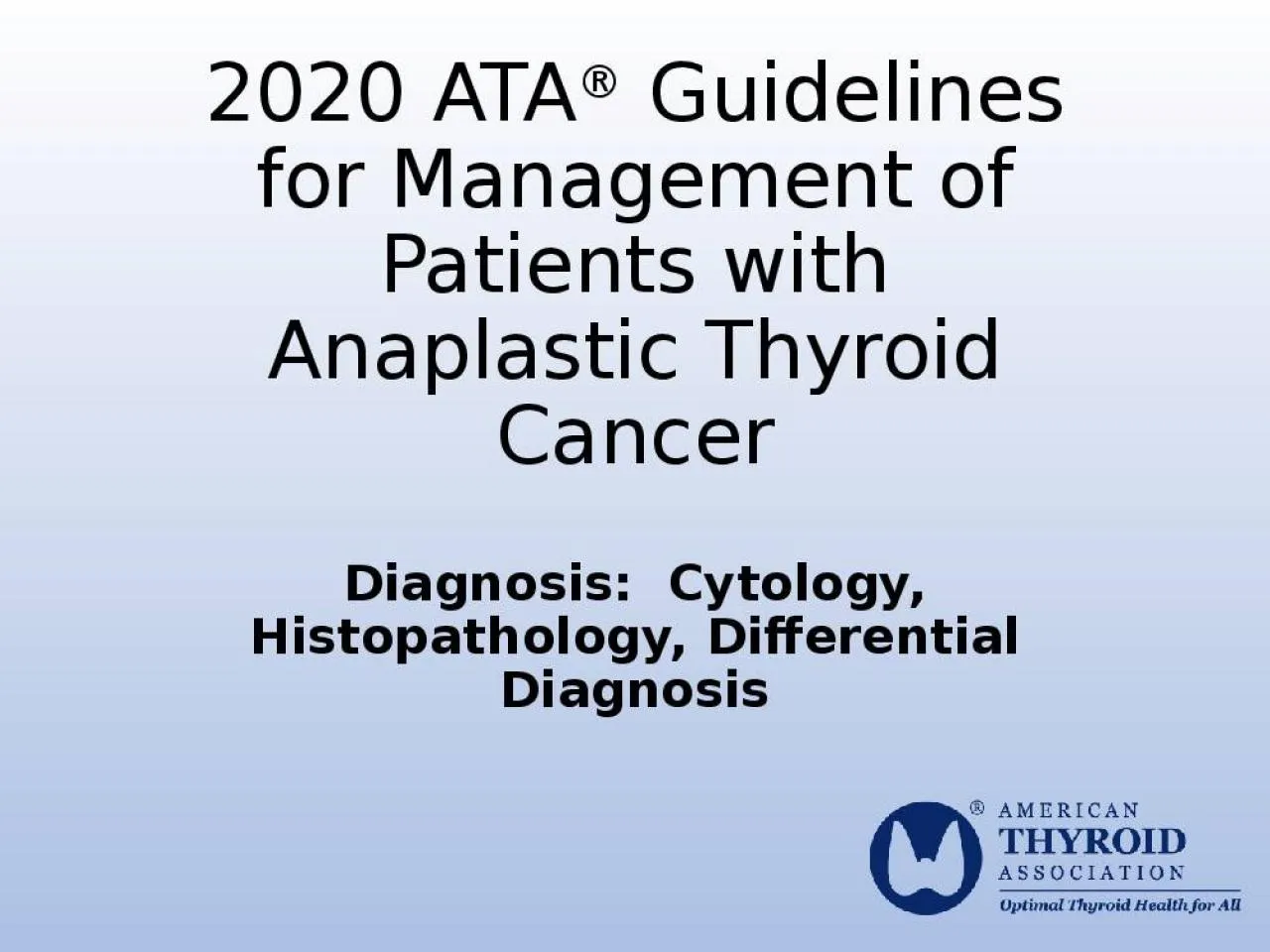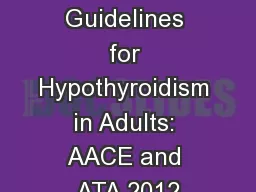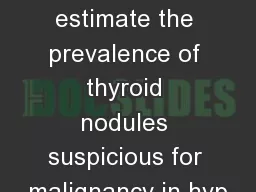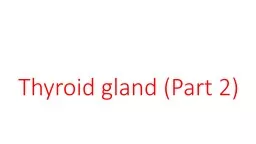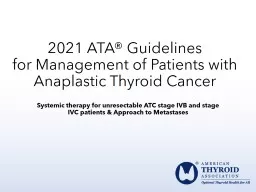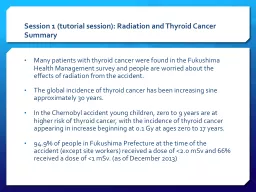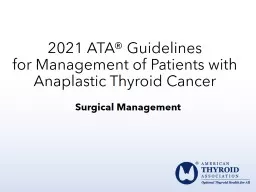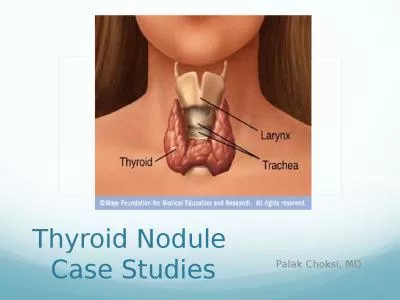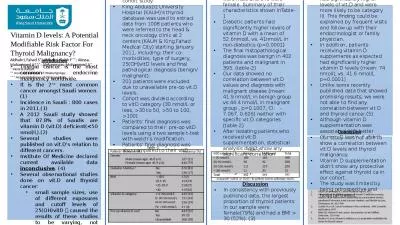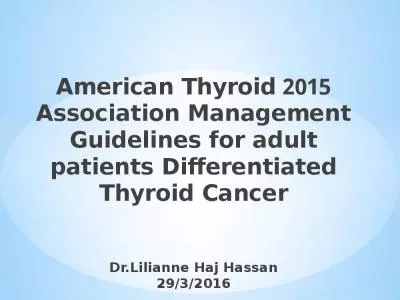PPT-2020 ATA ® Guidelines for Management of Patients with Anaplastic Thyroid Cancer
Author : morgan | Published Date : 2022-04-06
Diagnosis Cytology Histopathology Differential Diagnosis Cytology FNA cytology can play an important diagnostic role in the initial evaluation of ATC but parallel
Presentation Embed Code
Download Presentation
Download Presentation The PPT/PDF document "2020 ATA ® Guidelines for Management o..." is the property of its rightful owner. Permission is granted to download and print the materials on this website for personal, non-commercial use only, and to display it on your personal computer provided you do not modify the materials and that you retain all copyright notices contained in the materials. By downloading content from our website, you accept the terms of this agreement.
2020 ATA ® Guidelines for Management of Patients with Anaplastic Thyroid Cancer: Transcript
Download Rules Of Document
"2020 ATA ® Guidelines for Management of Patients with Anaplastic Thyroid Cancer"The content belongs to its owner. You may download and print it for personal use, without modification, and keep all copyright notices. By downloading, you agree to these terms.
Related Documents

